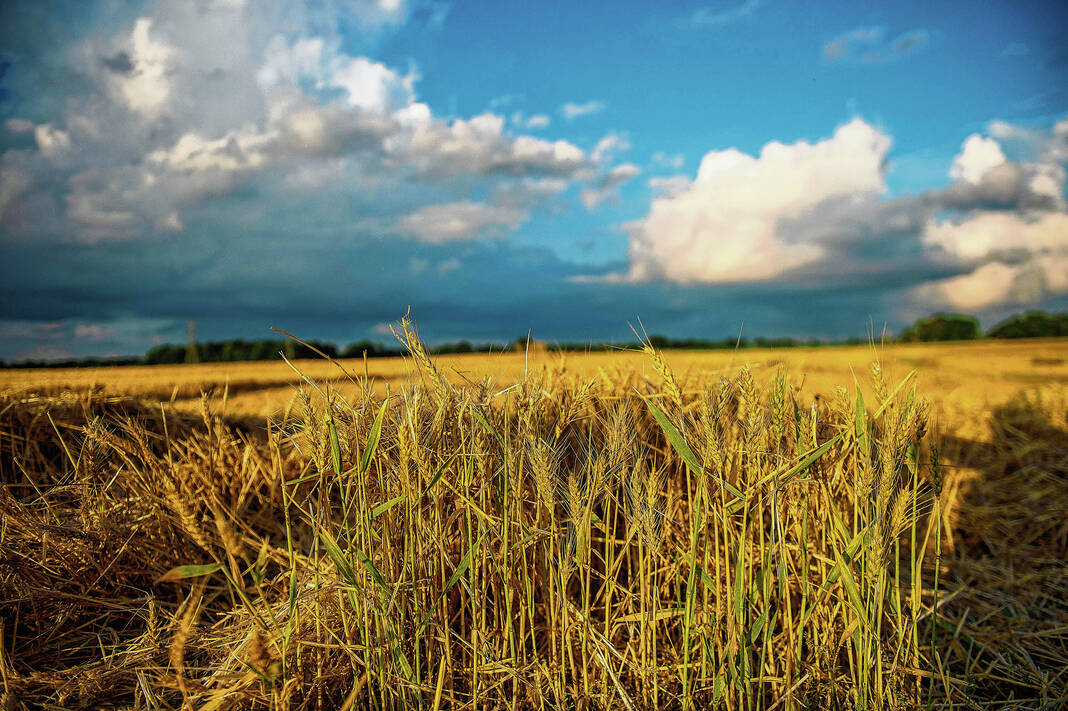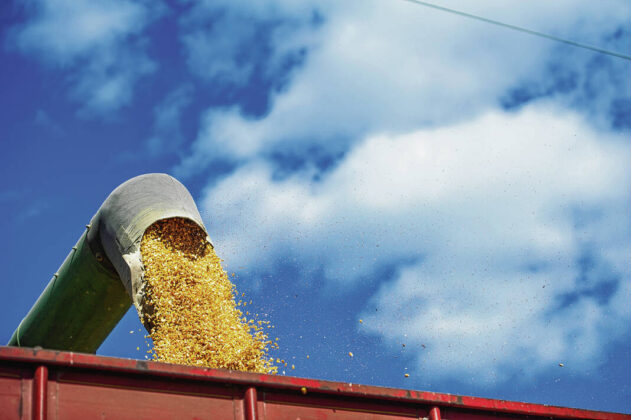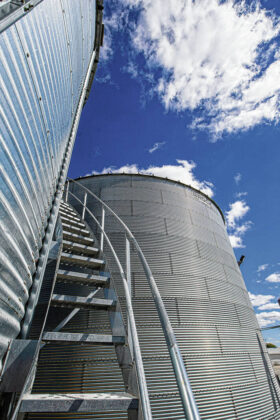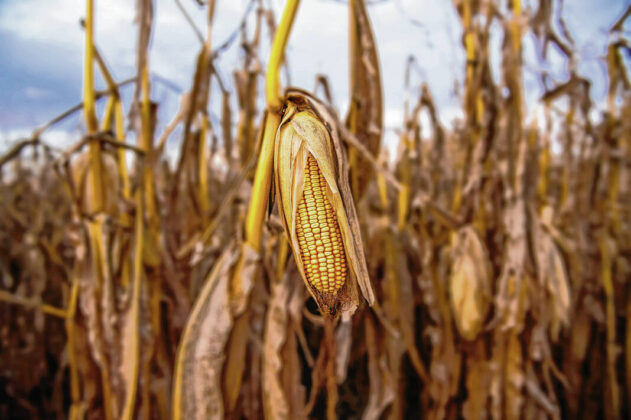HANCOCK COUNTY – Farmers in the county are pleasantly surprised by how this year’s harvest turned out after such a dry summer.
While there were few rain events, the ones that did occur were well timed. Record soybean yields are forecasted for the state. But ongoing inflation and the dry spell’s impact on river transportation are posing challenges.
Jonathan Sparks, a Hancock County farmer and a district director with the Indiana Farm Bureau, said this year’s harvest far exceeded expectations.
“It was so dry through the summer,” he said. “We were really pleased with how things ended up.”
The weather this fall was good too, he noted. But it was “abnormally dry” over the past 60 days, he said earlier this month after wrapping up his harvest.
“We had kind of a stretch in August where we received some rain, which was very timely for the soybean crop,” he said. “And then about the time we got started in the field, it just kind of shut off.”
The National Weather Service reported monthly precipitation totals for the Indianapolis area of 1.42 inches in October and 2.12 inches in September, below normals of 3.22 inches and 3.14 inches, respectively. August saw 4.44 inches, above a normal of 3.2 inches. June and July had 1.18 inches and 3.1 inches, respectively, below normals of over 4 inches.
“I don’t remember a harvest that we worked as many continuous days without being out for a couple days with rain,” Sparks said.
The U.S. Department of Agriculture forecasts record soybean yields this year for Indiana. The department anticipates a harvest of 5.83 million acres, up 190,000 from last year. It predicts a soybean yield of 60 bushels per acre, up a half-bushel from last year. That’s also higher than the 2022 national forecast of 50.5 bushels per acre.
“I think overall our soybean yields were very good, we probably had as good a bean crop as we’ve had,” Sparks said of local performance. “And a lot of that was due to those timely August rains. Soybeans start blooming after the summer solstice, but August weather really is the linchpin of what a soybean crop will make. That’s where they start filling pods and continue to set pods and those rains we received in August were super timely, especially for a soybean crop that a lot of acres got planted a little later than we normally would’ve.”
Chris Muegge, president of the Hancock County Farm Bureau, agreed this year’s harvest was better than expected.
“I don’t know that we have a record crop in our area, but it’s definitely better than what we thought, with how dry it was,” he said. “I thought yields were really going to struggle. Some of the technology we have in a lot of these corn hybrids and bean hybrids are able to handle drought better today than they were able to 10 years ago.”
Muegge said he typically plants soybeans after corn, adding August rains make a big difference on beans, something his crops just didn’t get. He also noted soil in the western and northern parts of the county tends to be wetter than where he is in the southeast, which he described as having more gravelly ground.
“Our crops probably struggled a little more in Blue River Township than maybe other parts of the county,” he said.
Lais McCartney, educator for agriculture and natural resources with Purdue Extension – Hancock County, pointed out how much of an impact the timing of planting can have on yields. Farmers who got their crops in early in April may have been optimistic until the dry period in June, which would’ve been an important time for corn pollination and when soybeans would’ve been starting to make their first pods. While it may seem counterintuitive, crops that got started late and avoided that dryness during those important stages may have actually turned out better, McCartney said.
“That’s hard, because you think that if you get in early, you have more time, but it just depends on what the weather does for you, and that’s unfortunately out of people’s control,” she said.
The USDA forecasts an Indiana corn harvest of 5.05 million acres, down 220,000 acres from last year. The department anticipates a yield of 186 bushels per acre, down 9 bushels from last year, and above a 2022 national average forecast at 172.5 bushels per acre.
Sparks recalled coming into the year with a lot of uncertainty toward inflation in farming input costs.
“A good crop absolutely helps that,” he said.
But the uncertainty remains.
“We’re going to face some of the same challenges,” he said.
Logistics is currently one of those challenges, he continued, adding grain elevators often struggle to get rail cars during harvest. A potential national labor strike also looms in the rail industry. Additionally, river systems are struggling to provide effective transportation routes due to low water levels stemming from little precipitation this year throughout other parts of the country as well.
“So that’s two-fold – a lot of our inputs come in on rail and up the Ohio River, and a lot of the grain goes the opposite way, so some of those logistics things are definitely a concern as we look toward the next crop,” Sparks said.
He also pointed to the National Oceanic and Atmospheric Administration’s drought monitor map, which reflects stretches of extreme drought in the areas of Oklahoma, Kansas and Nebraska, leaving him with big-picture, longer-term worries.
“There’s some definite concerns as we start to look toward the ‘23 crop,” he said.
2022 Crop Forecasts
Indiana
Corn
Yield: 186 bushels per acre (down 9 bushels from 2021)
Production: 939.3 million bushels (down 88.35 million from 2021)
Soybeans
Yield: 60 bushels per acre (up 0.5 bushel from 2021)
Production: 349.8 million bushels (up 14.22 million from 2021)
U.S.
Corn
Yield: 172.5 bushels per acre (down 4.5 bushels from 2021)
Production: 13.9 billion bushels (down 1.2 billion from 2021)
Soybeans
Yield: 50.5 bushels per acre (down 0.9 bushel from 2021)
Production: 4.38 billion bushels (down 57 million from 2021)
Source: U.S. Department of Agriculture








